How small can a washbasin be?
It is no coincidence that the projection, i.e. the depth of a floor-standing washbasin, has levelled off at around 19“ (48 cm) over time. Not only the ceramic appliance, but also the matching furniture units and even the faucets are normally precut to this dimension.
Just like with many other things that we use on daily basis, these elements have been standardized as a result of industrialization. In the past, washbasins were considerably larger, but there has been a trend towards minimization. Of course, apartments and their bathrooms and guest bathrooms have also become smaller over time. But this minimalist trend has not stopped at 19“: Nowadays, there are a large number of mini washbasins with a projection of 14.5“ or even 10“, specifically designed for small guest bathrooms.
Clever designs & shapes for the guest bathroom Handrinse basin from Geberit
Washbasins are not only available in a range of sizes, but also in a variety of timeless designs. Whether square, oval, or round, with vertical or horizontal drains – there’s a model to suit every type of room.
Small handwash basins with a space-saving drain are particularly practical where space is limited. They can be ideally combined with a narrow cabinet or a washtop.
Make sure you have the right basin shape. A small washbasin often means smaller shelf surfaces – so the shape can be crucial. A well thought-out design, such as an asymmetrical basin shape with a tap positioned to the side, allows the ceramic appliance to be utilized to optimum effect. This leaves space for the most important utensils for everyday life, despite the compact size.
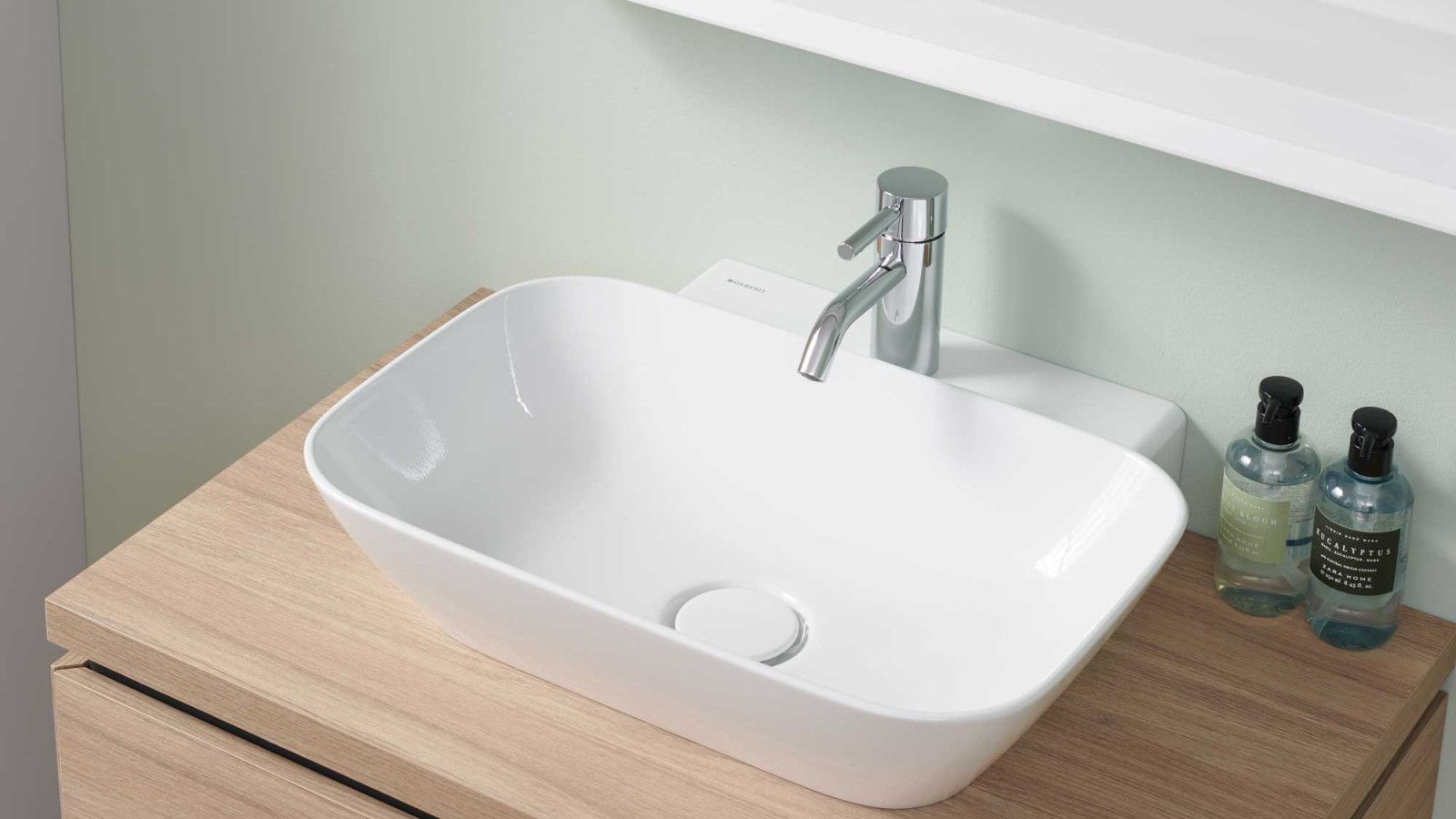
Small washbasins with cabinet
In small bathrooms or guest bathrooms, every inch counts – which makes handwash basins with cabinets all the more practical, as they combine functionality and organization in a small space. A particularly large amount of storage space can be gained by using a space-saving trap or by building the drain elegantly into the wall. This eliminates the need for a recess in the drawers, creating more storage space in the cabinet.
Tip: Clever organization systems provide structure and easier access to everyday bathroom utensils. A well-planned washbasin cabinet can noticeably increase convenience in the guest bathroom, with well thought-out interior subdivisions, quiet pull-outs, and optionally integrated storage space solutions. Add spacious mirror cabinets to create a tidy, modern look – even in the smallest bathroom.
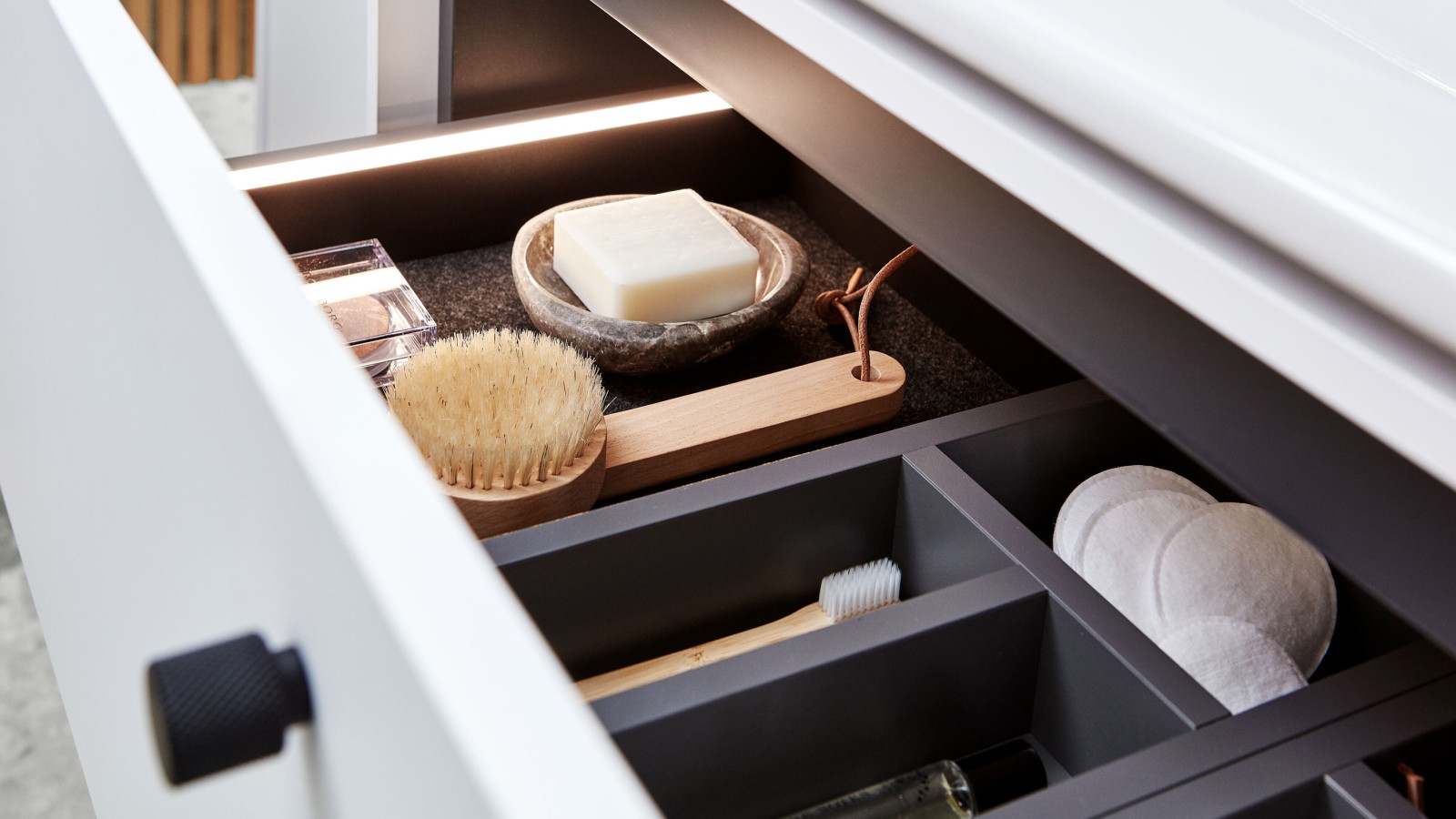
Corner handwash basin in guest bathroom
Special corner solutions enable the use of small washbasins in powder rooms with challenging floor plans.
Corner handwash basins make optimum use of the available space and and maintain freedom of movement in small bathrooms. Thanks to their compact design, they fit harmoniously into small bathrooms and combine functionality and attractive design.
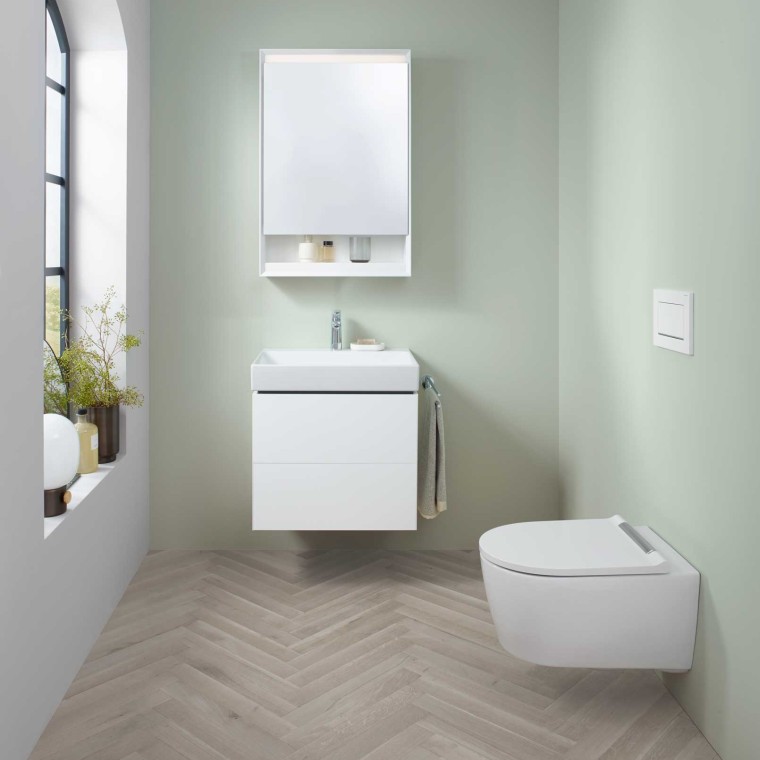
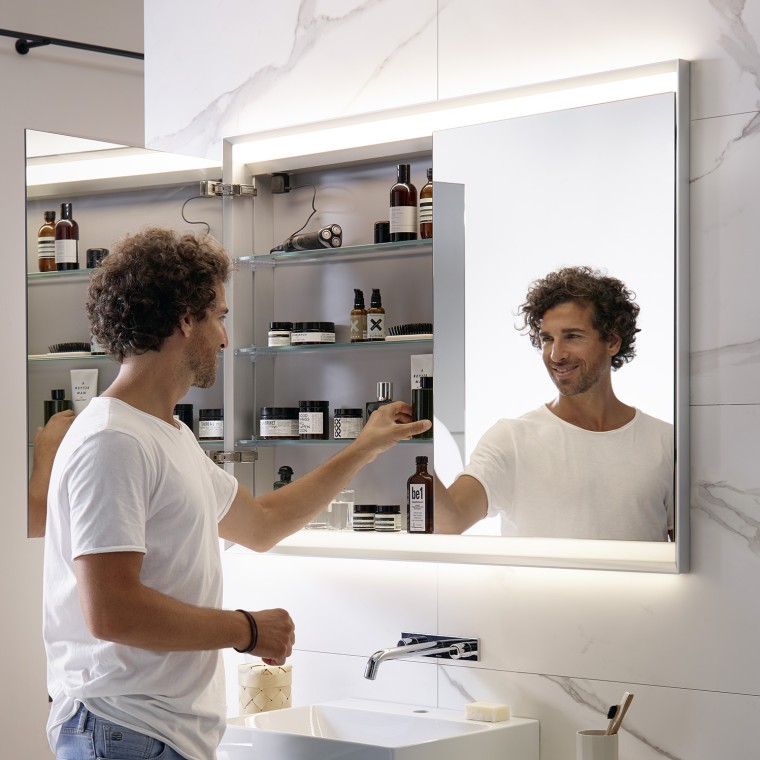
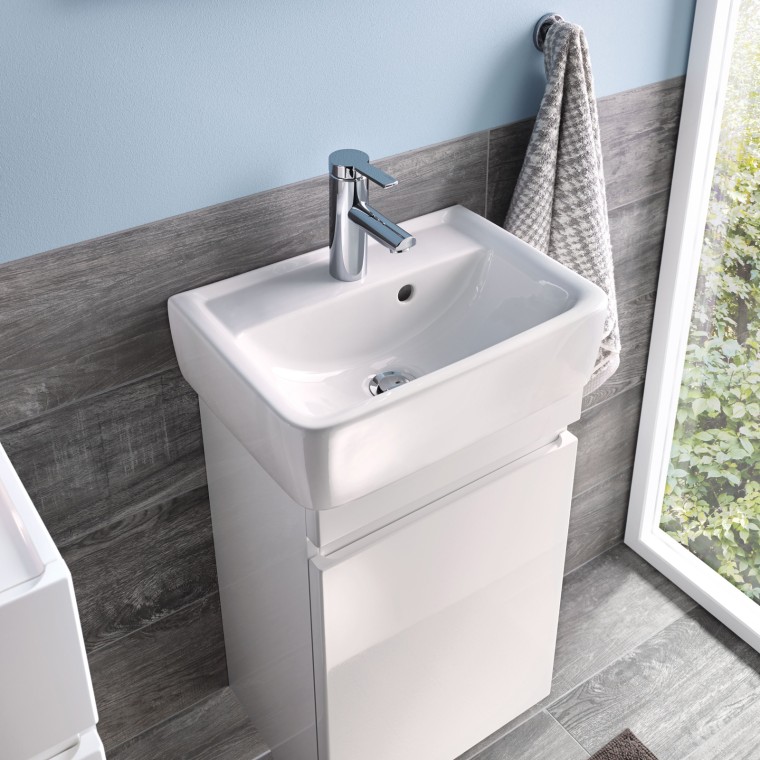

Functionality is important: basin depth & overflow protection
Even with small handwash basins, there must be enough space for hands to be positioned under the water completely, so do not underestimate the importance of basin depth.
Tip: Try out your favorite models in a showroom. As part of a “dry run”, you can try out how washing your hands feels.
If the faucet is accidentally left open, an overflow ensures that no water spills over the edge of the basin. Alternatively, a non-closable drain hole offers protection from damage to furniture and floors. Overflow protection is particularly useful for small washbasins.
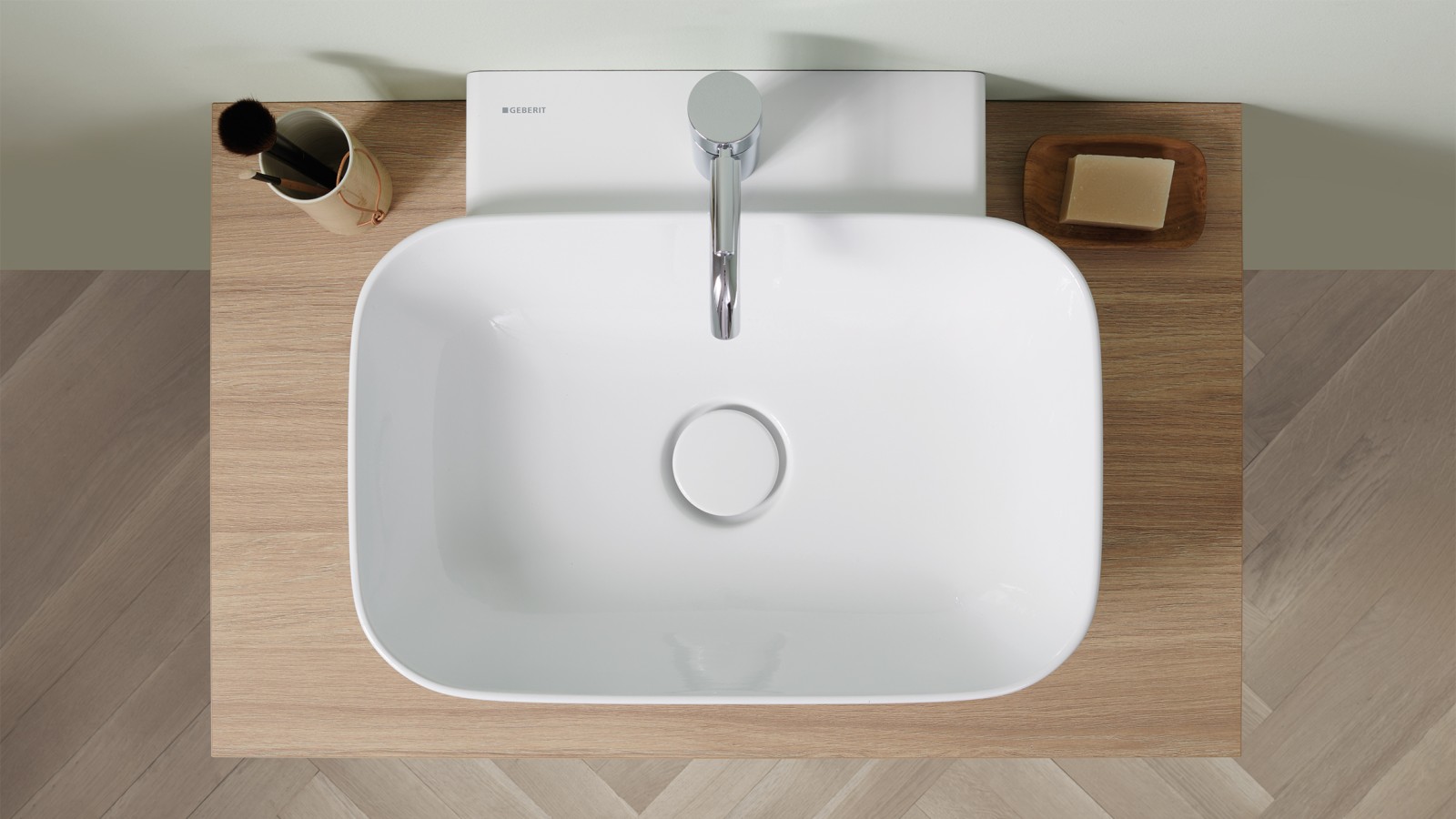
Space-saving taps in the guest bathroom
Space can also be saved with faucets by using wall-mounted models. It makes sense to think about the faucet and handwash basin together.
If you pay attention to where the water stream hits the sink, you can avoid unintentional water splashes. Specially shortened models are ideal for compact powder rooms and small bathrooms.
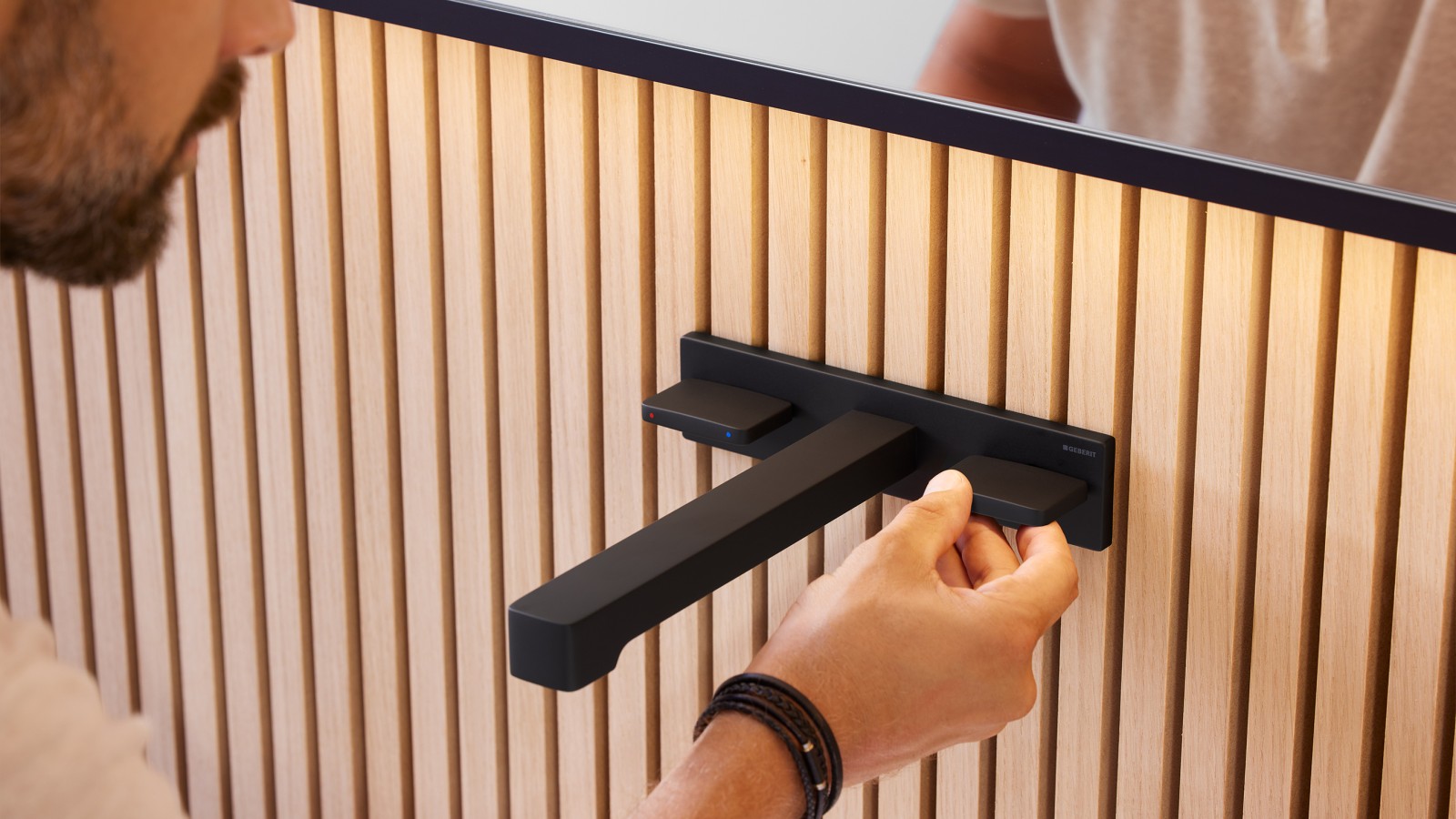
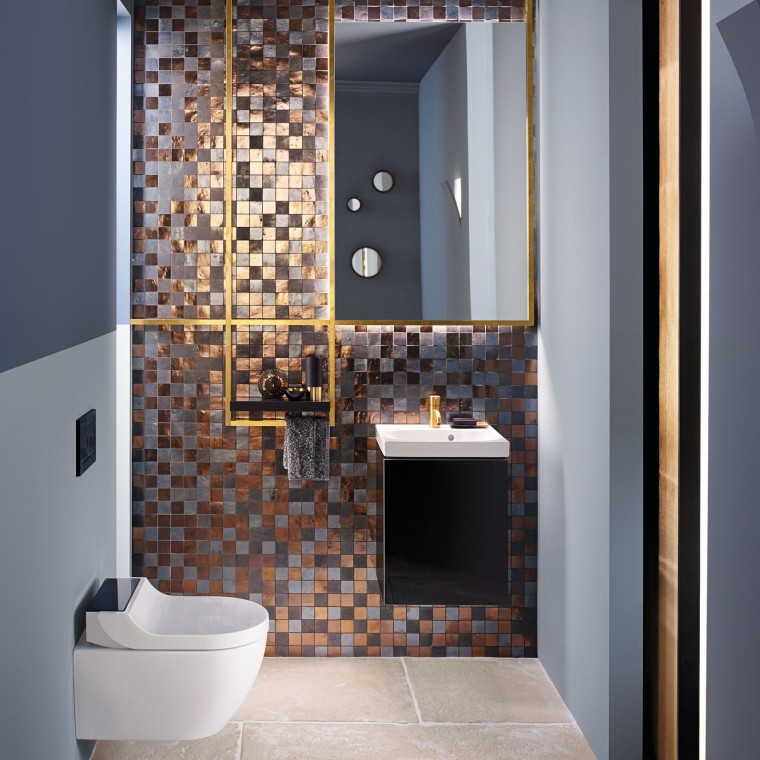
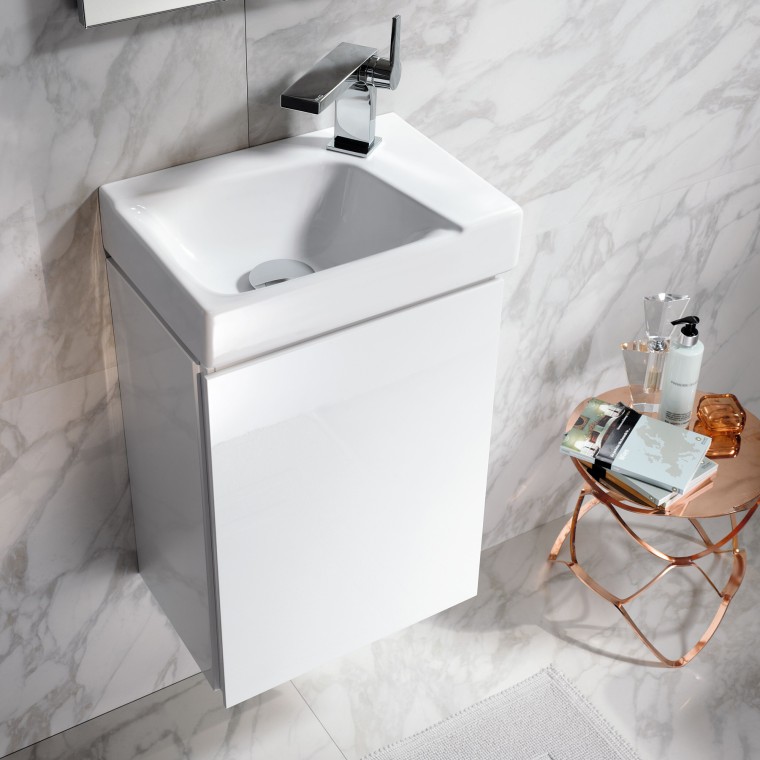
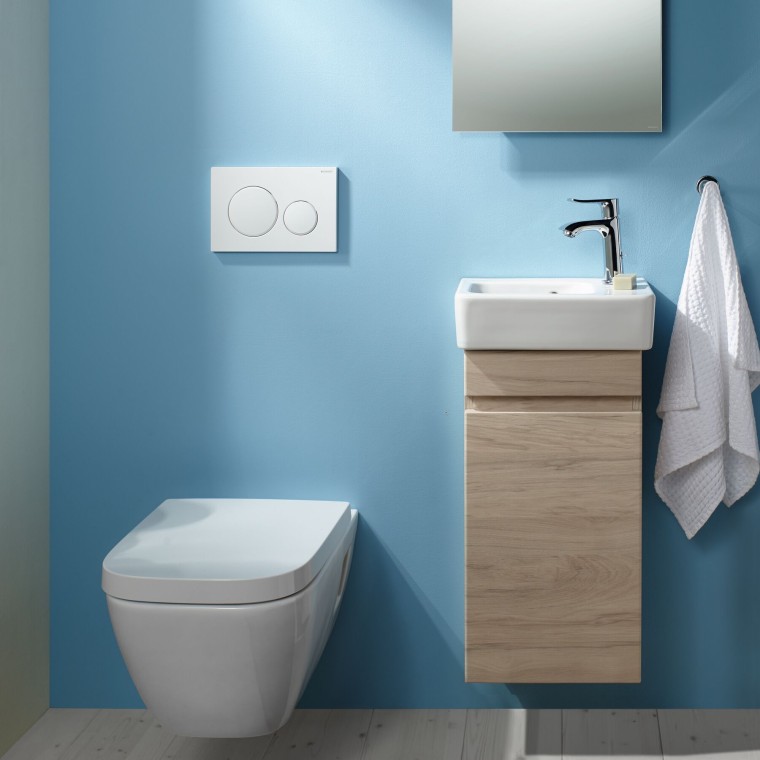
Frequently asked questions about small washbasins in the guest WC
How much space should you plan for the toilet and washbasin in the guest bathroom?
A functional guest bathroom should be at least 48 inches long and 32 inches wide. However, 60 × 48 inches are ideal dimensions for comfortable use of the toilet and handwash basin.
Can you easily replace any washbasin in a guest bathroom?
Replacement is usually possible without any problems as long as the connection dimensions and wall fastening match. If you are unsure, we recommend briefly consulting with professional designer or renovator.
How big does a handwash basin need to be?
A handwash basin in a guest bathroom is usually 8 to 18 inches deep. Particularly space-saving models have a projection of only 8 to10 inches and are perfectly adequate for occasional use.
Dutch preferences
What’s considered acceptable is entirely in the eye of the beholder – and a look at the Netherlands shows that their preferences can be quite surprising. This is a nation that is virtually obsessed with small formats, something that is not immediately understandable given the average height of the Dutch population. In fact, there are no concrete “physical” reasons behind this preference, which actually stems from an architectural tradition.
A question of harmony
Tradition or not – which factors do you need to consider if you want to equip your guest bathroom with a small but flawless washbasin solution?
- When it comes to the washbasin design, it should be as large as possible if you are very limited with space. You will often find asymmetrical designs in the segment in question, with the faucet positioned on the side. This ensures that you can make maximum use of the washbasin, and there is some space left over for a shelf surface.
- Naturally, the washbasin should also be deep enough so that you can hold both hands under the water. A “dry run” in a showroom can easily help you find the perfect depth.
- The faucet size: While in the showroom, you should also take a closer look at both the washbasin and faucet and, in particular, where the water jet hits the ceramic. Faucet manufacturers often offer smaller faucets in product ranges designed specifically for guest bathrooms. Even a small washbasin can be very appealing when equipped with a matching faucet.

Newsletter Register now
Stay up to date
Our newsletter provides fascinating insights and handy tips on how your bathroom can make your life easier.
3D bathroom planner Plan your bathroom free of charge
Find a showroom Browse and buy products
Create your dream bathroom in just 3 steps Discover our helpful tools
Step 1: Get inspired
Discover modern bathroom ideas and functions and put together your dream bathroom in just a few steps using our inspiration tool.
Step 2: Plan
Using our 3D bathroom planner, plan your bathroom online to include the right proportions and your dream equipment.
Step 3: Buy
Find your nearest bathroom showroom to get personal advice and a real-life impression of our products.
Bathroom products
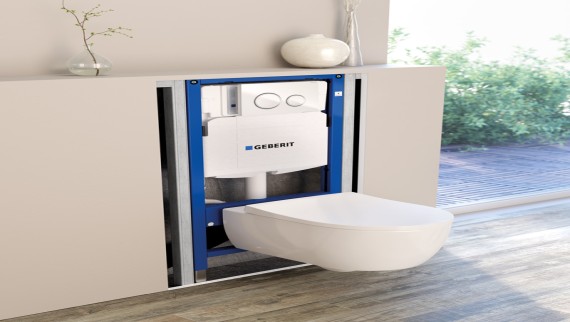
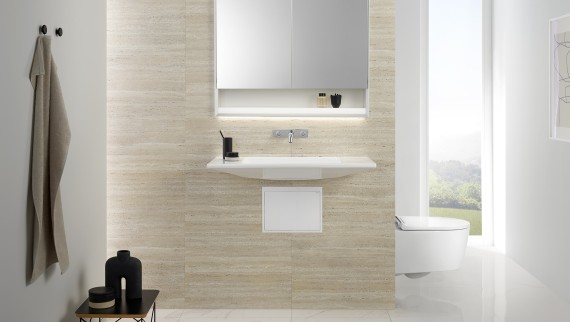
In-wall Lavatory Systems
Float your washbasin to increase accessibility and open up space in the bathroom.
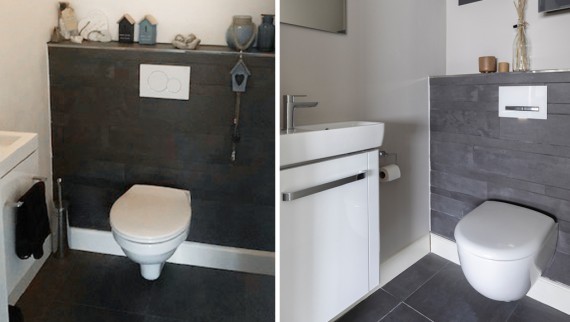
Pre-wall Toilet Systems
A pre-wall provides a handy shelf for bathroom necessities while also hiding the toilet tank.